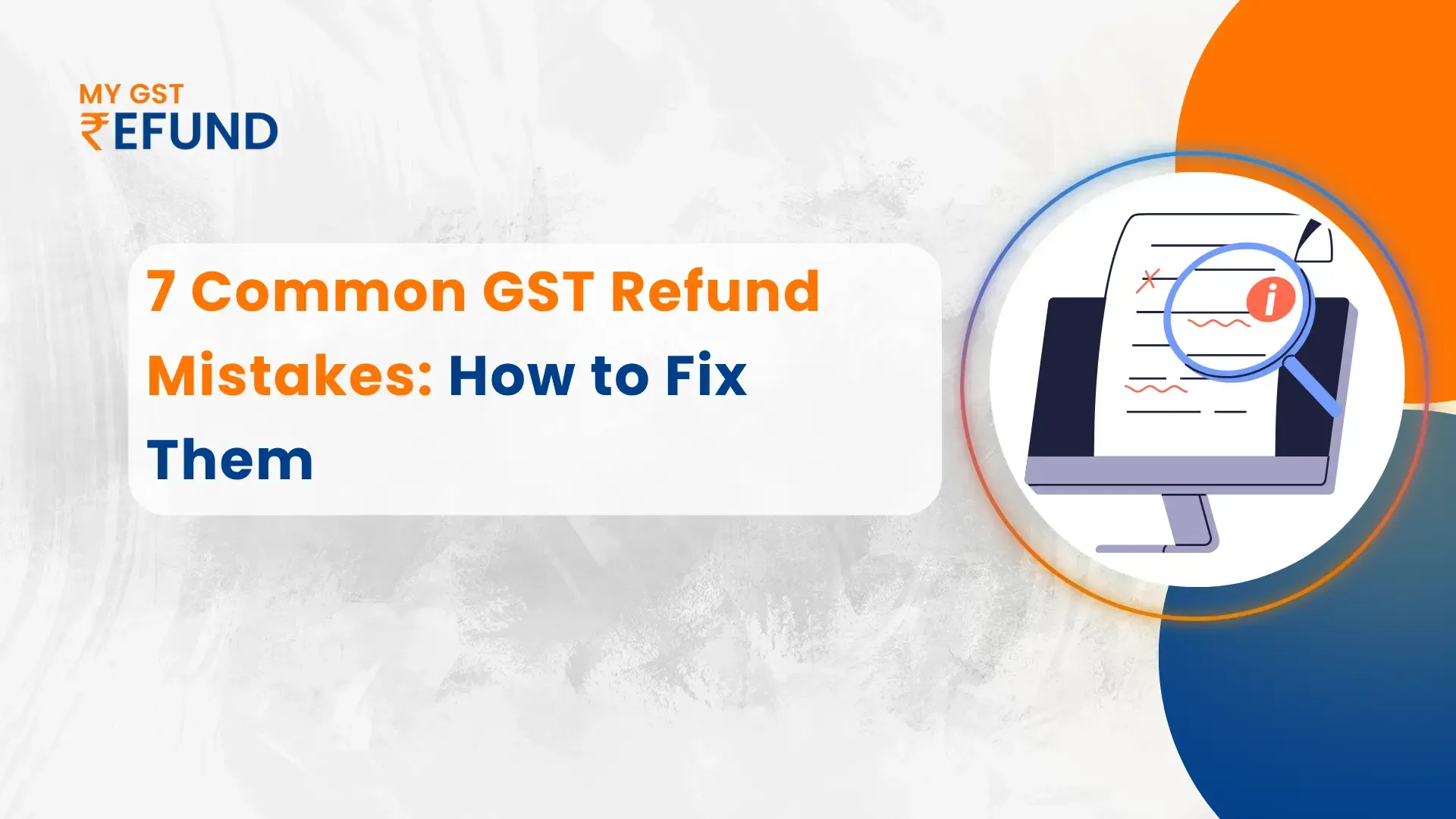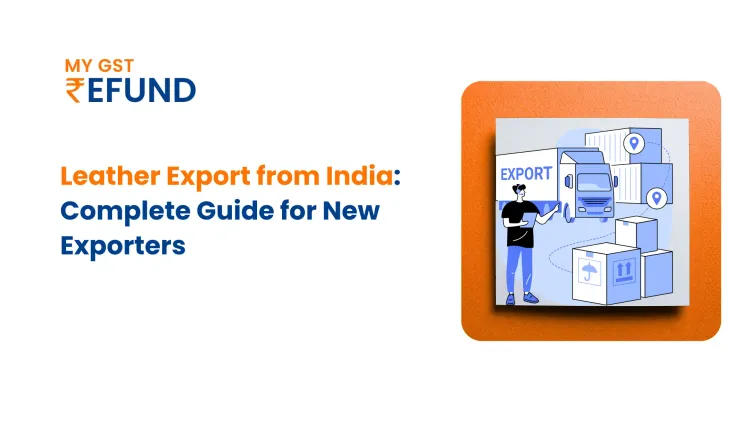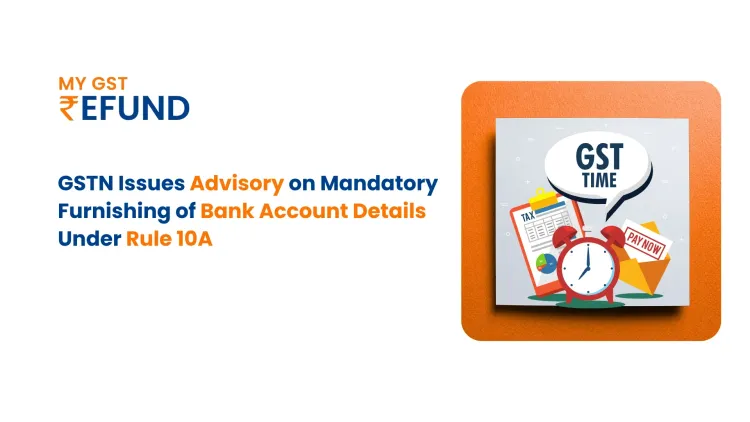Top 7 GST Refund Mistakes and How to Avoid Them in 2025
Published on: Mon Oct 13 2025
Bio (Reveal/Hide)

7 Common GST Refund Mistakes and How to Fix Them
Don’t Let Your Money Get Stuck!
If you’re a business owner, exporter, or accountant, you already know how critical GST refunds are to maintaining a healthy cash flow. The refund mechanism under the Goods and Services Tax (GST) is designed to ensure that taxes don’t become a cost to businesses engaged in zero-rated supplies, such as exports.
However, in practice, many refund claims are rejected or delayed due to minor, preventable mistakes -GST filing errors that lock up working capital for months and cause endless follow-ups with the department.
Mistake #1: Incorrect Calculation and Proration of Input Tax Credit (ITC)
Businesses often miscalculate the eligible refund amount because they do not correctly apportion the Input Tax Credit (ITC) between domestic taxable supplies and zero-rated supplies (exports).
Reason for occurrence:
The confusion typically arises from the formula under Rule 89(4) of the CGST Rules, particularly in defining the term “Adjusted Total Turnover.”
How to avoid it:
Use the correct formula every time:
Refund Amount = (Turnover of zero-rated supply of goods + Turnover of zero-rated supply of services) × Net ITC ÷ Adjusted Total Turnover
Make sure your turnover figures reconcile perfectly with GSTR-1 and GSTR-3B. Also, remember that “Adjusted Total Turnover” excludes the value of exempt supplies other than zero-rated supplies.
Checklist:
- Use the Rule 89(4) formula accurately.
- Reconcile turnover across all returns before applying.
Mistake #2: Non-matching of GSTR-1, GSTR-3B, and Shipping Documents
Differences in invoice numbers, taxable values, or IGST, CGST, and SGST amounts between GSTR-1, GSTR-3B, and shipping documents (Shipping Bills or Bills of Export) can halt your refund.
Why It Happens:
Manual data entry errors, taxable Value, Invoice Value, missed amendments, or system mismatches often cause discrepancies.
How to do it properly:
Perform a three-way ensuring between:
● Accounting records
● GSTR-1 and GSTR-3B
● Export documentation and ICEGATE data
All the things should be the same as the above documents (from an extra space in the invoice number to the figures of documents)
Must check:
Check invoice details from GSTR-1, GSTR-3B, and all the Shipping Bills.
Mistake #3: Filing a Refund Claim Under the Wrong Category
Many taxpayers select the wrong refund type in Form RFD-01 - such as choosing “Refund of excess balance in electronic cash ledger” instead of “Refund of ITC on account of exports without payment of tax.”
Reason for occurrence:
The refund form offers multiple categories, and their descriptions can be confusing for non-specialists.
How to escape the mistake:
Carefully read the refund category list before choosing. For exports without IGST payment, always select “Refund of unutilized ITC on account of export without payment of tax.”
Checklist:
- Double-check the refund category before filing.
- If unsure, consult your tax advisor or refer to CBIC’s refund type guide.
Mistake #4: Submitting Improper or faulty data
Uploading not complete, unnecessary or incorrect supporting documents, like as missed invoices, invalid BRCs/FIRCs, or out-of-date LUTs.
Reason of Occurrence:
Improperly recorded and did not maintain a dedicated refund file for each claim.
How to avoid it:
Maintain a standardized refund folder containing:
● Declaration and Undertaking
● Statement 2/3 under Rule 89
● Export invoices
● BRCs/FIRCs
● Valid LUT
Ensure every document is clearly scanned and legible.
Checklist:
- Maintain a digital folder for each refund claim.
- Verify every uploaded document for accuracy and clarity.
Mistake #5: Clerical Errors in Form GST RFD-01
Simple typing errors in RFD-01-like entering the wrong bank account, period, or turnover -can cause refund rejection.
Reason of Occurrence:
Rushing through filing without a proper review process.
How to avoid it:
Follow the points below written One person prepares the claim, another reviews it. Also, make sure your bank account is validated on the GST portal.
Cross-check every field before submission.
Confirm your refund bank account is active and validated.
Mistake # 6: Claiming Refunds on Ineligible or Blocked ITC
Including ITC on items not eligible under Section 17(5) of the CGST Act- such as motor vehicles, club memberships, or food and beverages.
Reason of Occurrence:
Failure to identify and exclude “blocked credits” while preparing refund computations.
How to avoid it:
Maintain a separate ledger for ineligible ITC and educate your accounting staff about Section 17(5).
Must check:
Review the ITC register to exclude blocked credits.
Mistake # 7: Non-coinciding with Rule of 96A which says about LUT
Exporters filing zero-rated supply refund without a valid Letter of Undertaking (LUT) for the relevant period.
Reason of Occurrence:
The LUT is valid only for one financial year, and many businesses forget to renew it in April.
How to avoid it:
● File Form GST RFD-11 every March to renew your LUT for the next financial year.
● Mention the ARN of the LUT on all export invoices.
Must check:
- Ensure LUT validity covers the refund period.
- Set calendar reminders for annual LUT renewal.
How MyGst Refund service helps clients get their GST refunds
We streamline the entire procedure to expedite the return of your money. Here's how:
Expert Filing: To avoid rejections, we manage all the intricate paperwork and guarantee accurate filing.
Faster Processing: By reducing delays, our experience enables you to promptly release your trapped working cash.
No Hassle Follow-up: With the GST department, we oversee all correspondence and follow-ups.
Frequently Asked Questions
Q1. Who can get a GST refund?
Any taxpayer can claim a refund under GST if they have paid excess tax to the government via exports or anything else made a tax payment in error
Q2. How long does it take to get the refund?
The GST office or department of India completes refund claims within 60 working days from the date of application.
Q3. What is the difference between the refund of ITC and the refund of IGST on exports?
Refund of ITC is claimed when you export goods/services without payment of IGST under a valid Letter of Undertaking (LUT).
Q4. What will happen if my refund has been claimed i under the wrong category?
If you have filed your claim under the wrong category, your claim may be rejected.
Q5. How can I check whether my LUT is valid or not?
LUTs are valid only for 1 financial year (April–March). You must ensure to file a new LUT at the start of each financial year using Form RFD-11.
Related Posts






